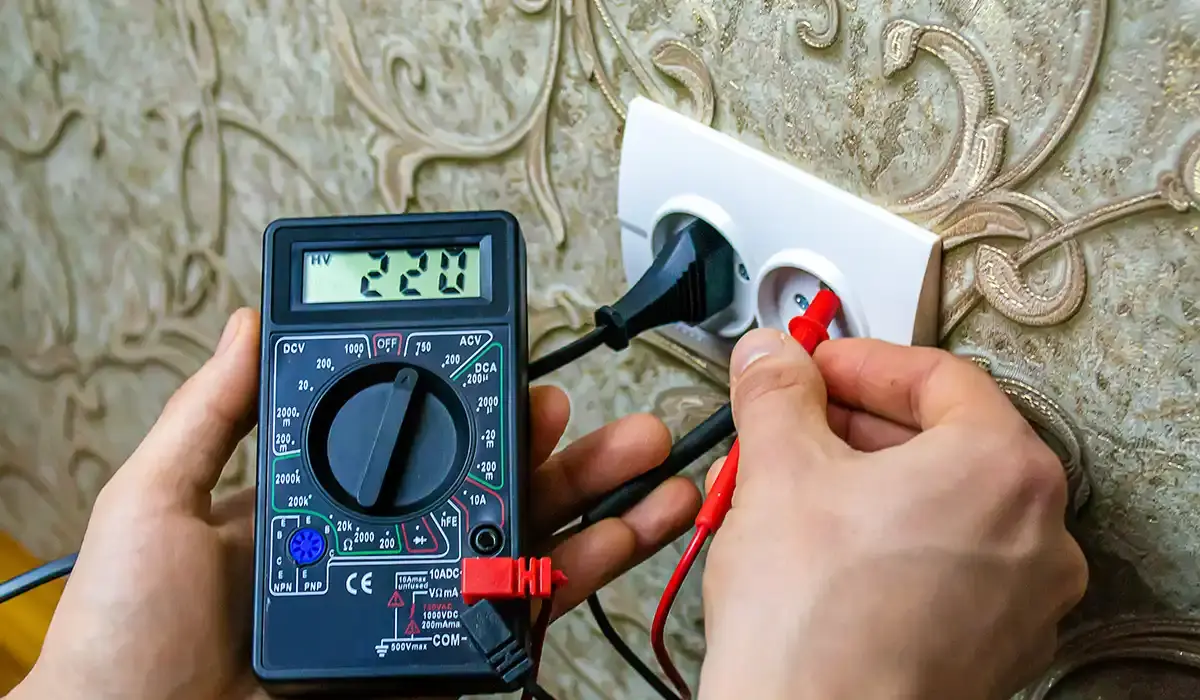Lightning & Electrical
Using a Voltage Tester: Step-by-Step Power Check

Using Voltage Tester Guide: How to Safely Check Electrical Outlets and Wiring
A voltage tester is a crucial tool for homeowners and electricians who want to identify live circuits safely before starting electrical projects.
Unlike a multimeter, a voltage tester is simpler to use and more affordable, making it ideal for beginners and quick home inspections.
This Using Voltage Tester Guide will help you understand how to test outlets, light switches, wiring, and batteries safely and accurately.
You might also enjoy the articles on our other site: CeraVe Introduces Five New Products for Skin Barrier Support
Safety Considerations Before Using a Voltage Tester
Whenever you work with electrical systems, always wear insulated gloves and take precautions to prevent accidental shock or injury effectively.
A voltage tester can provide false readings if the batteries are low, damaged, or if the device itself is faulty unexpectedly.
Always test your voltage tester on a live outlet before use to ensure it functions correctly and protects you consistently.
Testing Your Voltage Tester
Before starting any project, plug your voltage tester into a receptacle powering a lamp, microwave, or electronic device reliably.
Turn on the device to confirm the outlet is live, and check that your voltage tester flashes, beeps, or vibrates accordingly.
If the tester does not indicate power, replace the batteries or check for device malfunction to avoid dangerous errors during testing.
Types of Voltage Testers
There are three main voltage tester types: contact testers, non-contact testers, and receptacle testers, each designed for specific applications efficiently.
Contact voltage testers use two metal probes to directly measure electrical current on outlets, switches, or wires safely and precisely.
Non-contact testers detect electricity from about an inch away, preventing direct contact with live circuits and reducing risk substantially.
Receptacle testers plug directly into three-prong outlets to determine live current presence and wiring errors quickly and accurately.
How to Use a Voltage Tester Guide
Following this Using Voltage Tester Guide, you will learn step-by-step instructions to test outlets, wires, switches, and batteries efficiently and safely.
What You’ll Need
Equipment / Tools: Voltage tester, screwdriver, insulated gloves
Materials: Batteries for your voltage tester
Step 1: Set Up the Voltage Tester
Insert fresh batteries into your tester, ensuring proper alignment, then close the compartment securely to prepare for testing safely.
Turn on the tester and check its functionality on a live outlet before starting any electrical maintenance or improvement project confidently.
Step 2: Test an Outlet
For a contact tester, insert the probes into the slots of the outlet carefully, checking for flashes, beeps, or vibrations indicating live current.
Using a non-contact tester, hold the device about an inch away from the hot slot to detect electricity without touching exposed terminals directly.
Receptacle testers plug into the outlet, where indicator lights signal power and proper wiring, providing quick visual feedback on outlet status efficiently.
Step 3: Test Electrical Wiring
Test wiring by touching contact tester probes to hot and neutral wires, while non-contact testers detect live wires from a short distance safely.
Ensure the power is off before handling wires, and confirm the tester signals electricity accurately to avoid dangerous accidents or electrical hazards.
Step 4: Test Batteries
Voltage testers can identify live or dead batteries, especially for car batteries or higher-capacity sources where testing is more critical and practical.
Place one probe on the negative terminal and the other on the positive terminal; observe if the tester flashes, beeps, or vibrates for live power.
While voltage testers can help, multimeters provide more precise readings for battery voltage, measuring between 12.6 to 12.8 volts accurately.
Step 5: Test Light Switches
Remove the faceplate, then touch probes to screw terminals on the switch for a contact tester to detect live current and confirm switch status reliably.
Non-contact testers can be held about an inch away from terminals to detect current without direct contact, increasing safety during testing procedures efficiently.
Replace the faceplate after testing to ensure exposed wires remain protected from accidental contact or damage consistently.
Additional Safety Tips for Using a Voltage Tester
Always check that the voltage tester works on a live circuit before testing a dead circuit to prevent dangerous false negatives effectively.
Wear insulated gloves and stand on dry surfaces when handling electrical components to minimize risk of electric shock or injury significantly.
Never rely solely on a voltage tester; cross-check using multiple devices when necessary to ensure accuracy and protect your home safely.
Differences Between AC and DC Voltage
AC power alternates direction, while DC flows consistently, making AC potentially more dangerous at high voltages due to muscle contractions and gripping hazards.
Symbols for voltage: AC is represented by ‘V’ with a wavy line, while DC uses ‘V’ with solid and dotted lines, aiding identification.
Understanding voltage types helps you select the correct tester and take appropriate safety measures when working with different circuits professionally.
Common Mistakes to Avoid
Do not test a dead circuit without first verifying your voltage tester on a known live source to prevent errors that could harm you.
Avoid using faulty or low-battery testers, as these can fail to detect live currents, posing serious danger during any electrical work.
Always follow manufacturer instructions for the specific tester model to ensure safe and accurate testing every time you work.
Conclusion
Following this Using Voltage Tester Guide ensures safe, effective, and accurate testing of outlets, switches, wiring, and batteries efficiently.
A voltage tester is a simpler, safer alternative to a multimeter for basic electricity checks, helping homeowners prevent accidents and injuries successfully.
You might also enjoy the articles on our other site: How Kroger Quietly Dominates Daylight Saving Time Promotions
Explore more news on this website for additional home electrical safety tips, DIY repair guidance, and professional advice for safe projects consistently.
